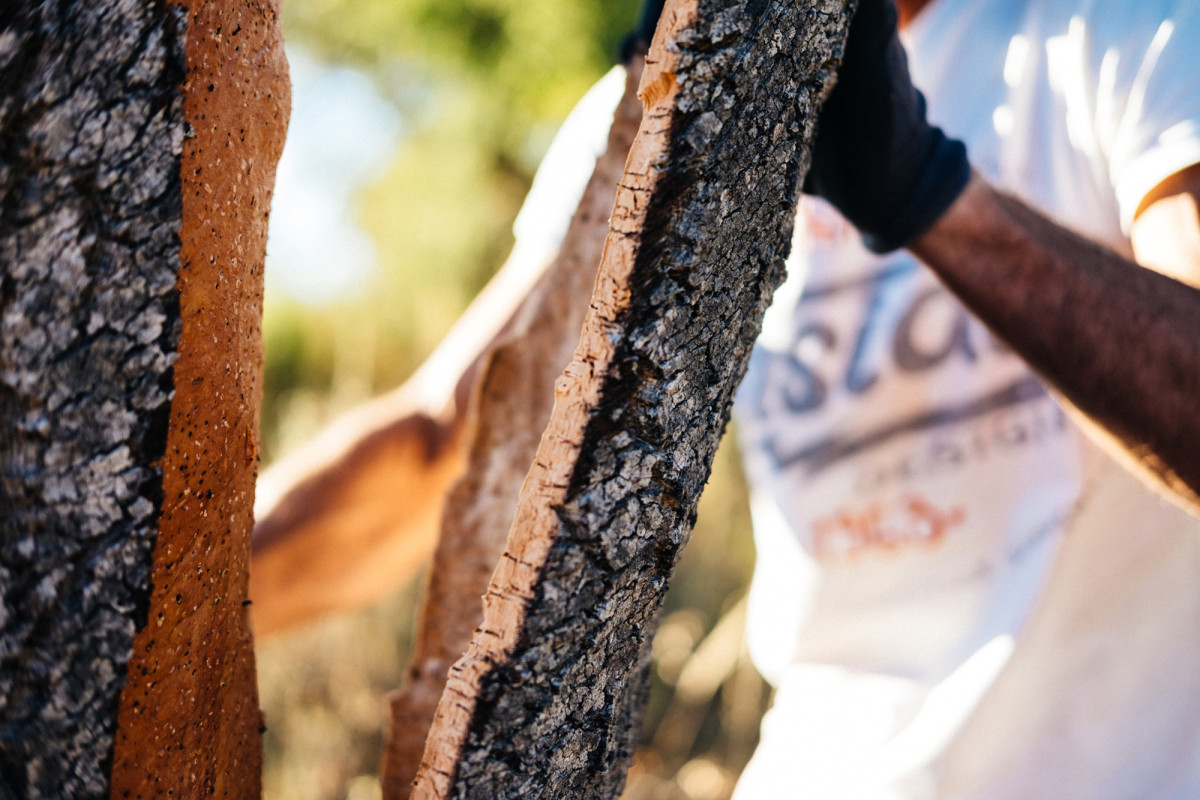Quercus suber, the cork oak, is native to Southwestern Europe and Northwestern Africa. Covering around 2.5 million hectares, cork oak forests provide vital income to over 100,000 people in the Mediterranean Basin. Unique in its ability to regenerate its outer bark, cork oaks reach maturity at around 25 years of age and can be stripped of their cork every 9 years without causing permanent damage to the tree - making cork a truly regenerative material.
Taking place during a narrow window in early summer, cork harvesting is a traditional livelihood and highly skilled job, requiring patience and dexterity. Using an axe with a curved blade, long, vertical cuts are carefully made in the outer bark without damaging the vital structures underneath. The bark is cut horizontally before being prised off in large pieces. Each tree is then marked with a number showing the year, to make sure the tree has the chance to fully regenerate before the next harvest. Rough, deeply fissured and grey, the outer bark hides a vibrant burnt Sienna cork cambium underneath. It is this cellular structure that will regenerate into cork.






